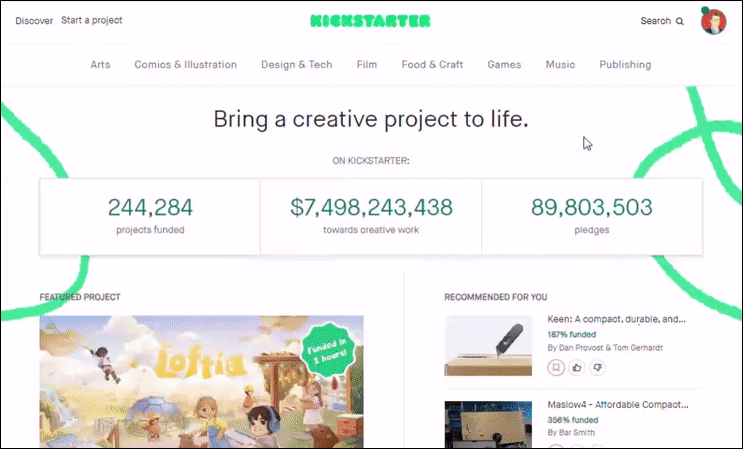What have I been talking about for the last year? (Part 1)
I've been writing every week for almost a year now for my Kickstarter blog. Although it's ostensibly about crowdfunding, it's really more generally about making things.
There’s been a broad range of subjects, so over the next few weeks I'll be writing a mini series summarising and linking to some of my articles so far.
If there's one single theme throughout the whole thing, it's that doing is the most important part, and it's also the part you have most control over. You can choose to do something rather than not do something. Once you have that mindset, you can overcome everything else and you can make anything.
Some things I’ve madeIdeas are cheap
One of the first things to overcome is the notion that your idea itself is the single most important thing. Too many people overvalue their ideas and undervalue the execution required to turn the idea into a real thing.
The initial idea does of course have some value, but it needs to be rigorously tested, iterated upon, and then, most crucially, massaged into a real product.
A common pattern I see is people who think they have an amazing idea, but believe it’s so special that they guard it closely and are afraid to tell anyone about it.
Invariably, those people never end up actually launching a product.
To paraphrase IBM computing pioneer, Howard Aiken:
Don't worry about people stealing your ideas. If your ideas are any good, you'll have to ram them down people's throats.
Ideas are cheap – it's what you do with them that counts.
Where do ideas come from?
Obviously you still need ideas before you can do anything, but ideas are plentiful and almost never the limiting factor. Where ideas come from is a subject I often find myself coming back to.
A very common source of ideas is constructive discontent. This is when someone is unhappy with an existing product or frustrated by an everyday task, and then they decide to actually try and make something better.
Most people just let those quotidian annoyances pass them by. Others might make a one-off improvement by modifying or hacking an existing solution. And some people turn their discontent into brand new products.
A new take on coat hangersAlmost ten years ago, my very first Kickstarter project was born out of a rant I had about existing products. Specifically, I was disappointed by the state of modern razors. I thought I could do better. So I designed a new razor, raised money on Kickstarter, and started a razor company.
Jump to my latest Kickstarter project earlier this year and the original idea came from the rather abstract premise that I wanted to break a world record. Again, I developed the idea, raised money on Kickstarter, made the smallest playing cards in the world, and am now awaiting official validation from Guinness World Records.
When it comes to your ideas, you need to be able to recognise a good one, validate it by actively doing things and talking to people, and know when to let a bad one go.
Making is easier than you think
Execution is what differentiates success from obscurity. When you're starting out, the end goal of producing a real product can seem impossibly far away.
But making something, anything, is easier than you think. That's not to say making products isn't a complicated process, but as a creator your job is to orchestrate your idea into life, and not necessarily to make it all yourself. There's a world of people and businesses out there who will help you make things and all you need to do is find them.
By breaking it down into bitesize pieces and realising that you don’t have to do everything yourself, you really can make anything.
Just start
Once you’ve come to terms with not being too precious about your idea and decided you want to make it real, you need to actually start.
This is a point where inertia is strong and it’s very easy to simply do nothing.
Sometimes that’s a good sign that you don’t believe enough in your idea, and that’s fine. But often it’s something you just need to overcome by doing something. Start small and move quickly.
One great way to get the ball rolling is to start a Kickstarter project today. This isn’t as ridiculous as it sounds. Even if your project never becomes a live Kickstarter campaign, the process of setting out your thoughts in a way that focusses on selling the story of your product is a powerful exercise.
Start right nowIf you’re going to take your idea all the way to a finished product you’ll need to keep the momentum going. There will undoubtedly be ups and downs, and indeed sometimes the right thing to do is to kill the project.
But unless you’re developing a product that’s beyond the boundaries of science, nothing is insurmountable. To make anything, you need to do things, talk to people, and get help where necessary.
Nothing tangible will happen just by thinking about it. Choose to do something about it.



